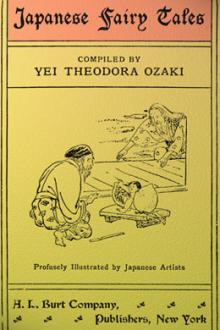Genre - Other. You are on the page - 576

r description as they seemed toneed or as pleased me, and in one or two instances I have gatheredin an incident from another version. At all times, among my friends,both young and old, English or American, I have always found eagerlisteners to the beautiful legends and fairy tales of Japan, and intelling them I have also found that they were still unknown to thevast majority, and this has encouraged me to write them for thechildren of the West.Y. T. O. Tokio, 1908. CONTENTS. MY LORD BAG OF RICE

gh the subject consciously wishes to be hypnotized. Unconsciously, there may be a poor interrelationship with the hypnotist which can create an unfavorable climate for hypnosis. When this is the case, the subject doesn't respond until such time that he relates well to the hypnotist. Even the most calculated procedures will fail until a positive transference relationship is established. I am sure that you sometimes have said, "For some reason I don't like that person." If pressed for

Bracing himself, Thomas stepped through the ward and onto the first step, and had to steady himself against the wall as the effect faded. He shook his head and started up the stairs.The banister was carved with roses which swayed under a sorcerous breeze only they could sense. Thomas climbed slowly, looking for the next trap. When he stopped at the first landing, he could see that the top of the stairs opened into a long gallery, lit by dozens of candles in mirror-backed sconces. Red draperies

g More's lifetime. Its first publication in this country was in the English translation, made in Edward's VI.'s reign (1551) by Ralph Robinson. It was translated with more literary skill by Gilbert Burnet, in 1684, soon after he had conducted the defence of his friend Lord William Russell, attended his execution, vindicated his memory, and been spitefully deprived by James II. of his lectureship at St. Clement's. Burnet was drawn to the translation of "Utopia" by the same sense of

F A LETTERThe mechanical construction of a letter, whether social, friendly, or business, falls into six or seven parts. This arrangement has become established by the best custom. The divisions are as follows: 1. Heading 2. Inside address (Always used in business letters but omitted in social and friendly letters) 3. Salutation 4. Body 5. Complimentary close 6. Signature 7. Superscription 1. THE HEADING The heading of a letter contains the street address, city, state, and the date. The

the consumption of himself and his friends.No. Philip Hornby had some strong motive in paying a heavy bribe to avoid the visit of the dogana. If he really had paid, he must have paid very heavily; of that I was convinced. Was it possible that some mystery was hidden on board that splendidly appointed craft? Presently the gong sounded, and we went below into the elegantly fitted saloon, where was spread a table that sparkled with cut glass and shone with silver. Around the center fresh flowers